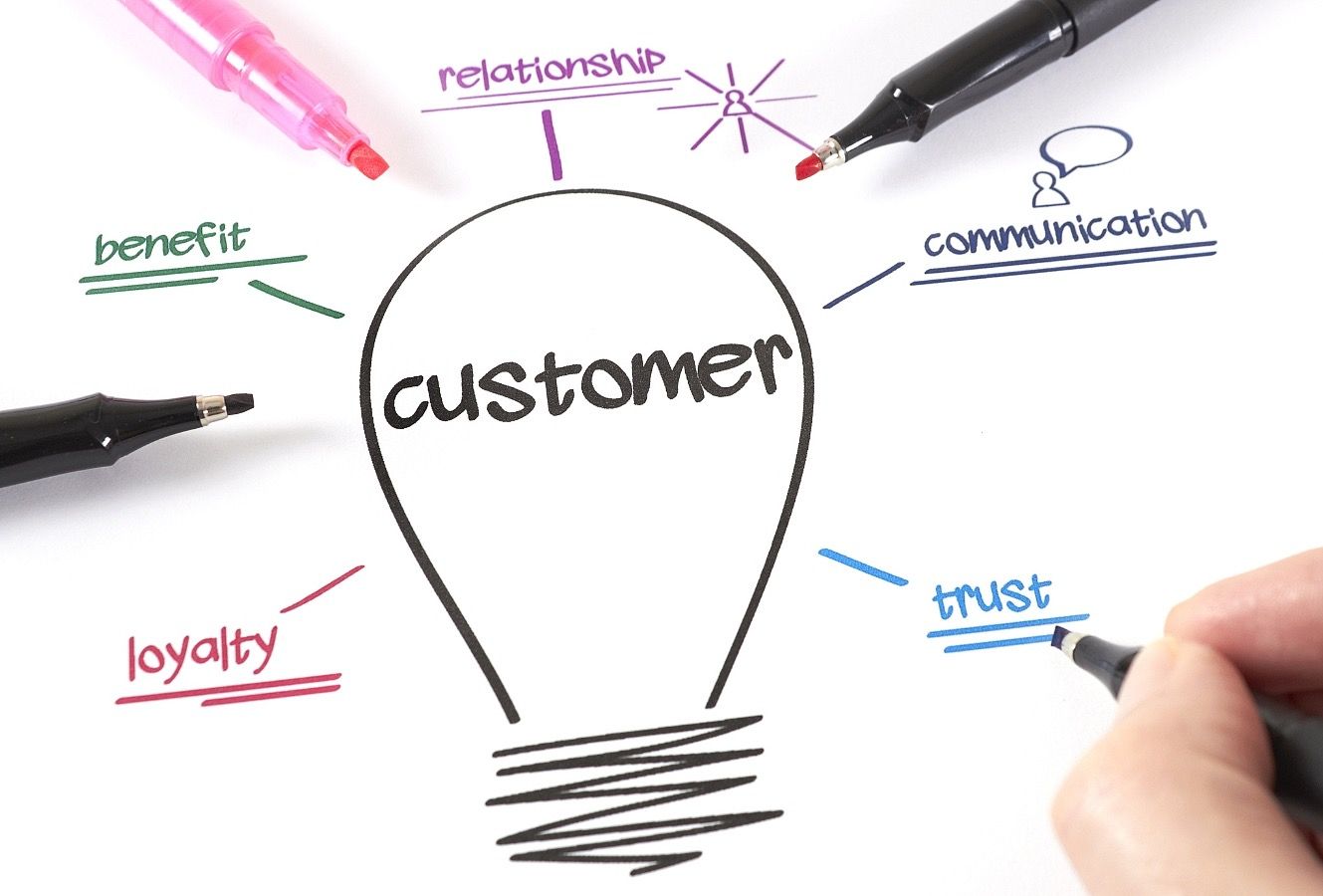 https://www.mypinio.com/wp-content/uploads/2023/02/How-to-find-promo-codes-easily.jpg
788
1400
mypinio
https://mypinio.com/wp-content/uploads/2022/04/mypinio_logo-1.png
mypinio2023-02-13 12:03:402023-02-13 12:06:15Promo Code: This is how easy you can find them to save money
https://www.mypinio.com/wp-content/uploads/2023/02/How-to-find-promo-codes-easily.jpg
788
1400
mypinio
https://mypinio.com/wp-content/uploads/2022/04/mypinio_logo-1.png
mypinio2023-02-13 12:03:402023-02-13 12:06:15Promo Code: This is how easy you can find them to save money25 January 2023 [xyz-ips snippet=”CATEGORYLINK”]
CONTENT
- 1 What is a customer community?
- 2 Why do companies operate a customer community?
- 3 A successful customer community needs strong community management.
- 4 What advantages does a customer community bring to customers?
- 5 What are the challenges for companies in running a community for customers?
- 6 Tips for recruiting new members for a customer community
What is a customer community?
A customer community is a place where customers of a company or brand can come together to communicate, ask questions and share ideas. A customer community can exist on a variety of platforms, such as social media, forums, chat groups or a company-provided community platform. A customer community can help to significantly strengthen customer loyalty and retention. A customer community offers companies the opportunity to receive feedback directly from their customers and address their concerns, and can help build awareness and reach for a brand, product or company. In addition, a customer community can be used as additional customer support, with customers helping each other and answering questions. And it can help a company improve products and services by receiving feedback directly from customers through the community.
Why do companies operate a customer community?
The purpose of a customer community is to provide a platform where customers can contact and interact with each other and with the company. And they do so in a direct way! The great sense therefore lies in the immediacy of the dialogue. A company becomes more tangible for its customers through a customer community, which can significantly increase the customers’ identification with the company and the products. All in all, a customer community can contribute to
- strengthen customer loyalty by providing an opportunity to give feedback, share ideas and solve problems.
- provide better customer service by responding more quickly to enquiries and problems
- conduct market research by enabling the company to communicate directly with customers and understand their needs and wants
- drive product development and innovation by benefiting directly from customer feedback
- build a stronger relationship between the company and its customers, thereby increasing the likelihood that customers will recommend the company to others and come back again
- that customers support and help each other by sharing their experiences and knowledge. This can be particularly beneficial for new customers
- raise awareness of the company and its products/services
- promote and advertise their own brand and products
- improve the company’s image and strengthen customers’ trust in the company.

A customer community creates customer loyalty, trust, a better customer relationship, improves communication between customers and companies and thus offers advantages for all sides!
A successful customer community needs strong community management.
Running a customer community requires active management to be successful. Without active management, a customer community can quickly become disorganised and inactive, which can lead to members becoming disengaged and losing interest. Active management is therefore necessary to achieve the community’s goals and strengthen the relationship between the company and its customers. Active community management includes several aspects:
- Moderation: it is important to monitor the community and ensure that rules and guidelines are followed and that any inappropriate or offensive posts are removed.
- Engagement: The company needs to be actively involved in the community and respond to posts and requests from members. This can help build trust and strengthen the relationship between the company and customers.
- Content creation: It can be helpful to create and share new content regularly to maintain activity and interest in the community.
- Solicit feedback: To extract valuable data from the customer community, community managers need to conduct regular surveys, live polls and touchpoint analysis
- Analyse: Community activity and interactions should be regularly monitored and analysed to understand how the community is performing and how it can be improved.
What advantages does a customer community bring to customers?
A customer community is not only of great benefit to a company itself. It also offers customers and consumers many advantages, such as the possibility to exchange information with other consumers and to receive help and support from them. This is especially valuable for products that require explanation and technical products. Apart from that, it can save the company a lot of support costs.
A customer community also allows consumers to read product reviews from other consumers and form an opinion about a product before they buy it. One of the most important advantages is that consumers have the opportunity to contact the company quickly and easily. And that is what they expect from a company! So it is important that companies develop feedback mechanisms that are efficient and satisfying.
Another advantage for customers and consumers are discounts and vouchers offered by the company that are only available to members of the community. Companies offer such discounts and vouchers to keep customer community engagement high and to thank customers and consumers for active participation.
In addition, a customer community can provide customers and consumers with access to information and knowledge that they would not otherwise easily find, such as tips and tricks shared by other members of the community. The possibility for customers and consumers to test products and product concepts is also a great advantage. The products are usually shipped free of charge and customers and consumers are allowed to keep them.

Companies with a high degree of customer centricity provide their customers with a customer community in order to obtain more information about the wishes and needs of their customers.
What are the challenges for companies in running a community for customers?
It can be very challenging to build and maintain an online customer community. It takes time, resources and commitment to build an active and useful community. Here are some of the challenges businesses and brands can face when building an online customer community:
- Recruiting members: The first major challenge is recruiting members. There are several ways to do this, which we will discuss in more detail in the following paragraph.
- Sustaining activity: It can be difficult to initiate and sustain activity within the client community, especially if the number of members is very low to begin with.
- Retaining members: It can be difficult to keep members engaged with the community and ensure that they return regularly.
- Moderation: A customer community requires regular moderation to ensure that discussions remain productive and respectful.
- Time and resources: A customer community also requires time and resources to build and maintain, especially for an active community.
- Member expectations: meeting the expectations of community members and ensuring that the community meets their needs.
- Relevant content: It can take effort to generate and maintain relevant content for the community to keep members interested and engaged.
- Personalisation: It can be difficult to make the community personalised and engaging to attract and retain members.
- Technology: It can be difficult to select and implement the right technology platform for the community, especially when it comes to integrating with existing systems.
- Competition: A community needs to differentiate itself from other communities in order to be successful and stand out from the competition.
- Data protection: An important factor in creating a community is also the data protection of members, ensuring that data is stored and processed securely.
- Costs: Community management can require a not inconsiderable amount of money, both in terms of the development of the platform and the personnel costs for support and moderation.
- Communication: Develop and implement a communication strategy that engages community members and encourages them to actively participate in discussions.
- Adding value: It can be equally challenging to provide real added value to members so that they invest their time and energy in the community and actively participate.
- Internationalisation: If the company or brand operates internationally, it can be challenging to support the community in different languages and cultures.
- Compliance with laws and regulations: It is important to ensure that the customer community complies with applicable laws and regulations, especially with regard to data protection, competition and advertising.
- Integration into the overall strategy: It can be a challenge for the management team to integrate the community into the overall strategy of the company or brand and ensure that it actually supports the business objectives.
- Fraud and spam protection: It can be difficult to protect a customer community from fraud and spam, especially if the community is growing rapidly.
Tips for recruiting new members for a customer community
A customer community only makes sense if it has a sufficient number of members. Only then will it be more fun for the members to exchange ideas and actively participate if they see that there is always new content. Recruiting members for a new customer community can be a real challenge, but there are some best practice tips that can help you. We have summarised some of these tips for you below.
- Existing channels: Use existing channels such as your website, social media channels and email lists to draw attention to your community and recruit members. Invite your customers via newsletters or email distribution lists.
- Influencers: Work with influencers from your industry to promote the community and recruit members.
- Create an attractive offer: Make sure your community offers an attractive offer for members, e.g. exclusive offers, access to expert knowledge or the opportunity to participate in surveys and competitions.
- Landing page: Create a landing page that introduces your community’s offer and explains why membership is useful. Keep this landing page short and to the point and offer the possibility to register directly via the landing page without having to call up another page.
- Use SEO: Optimise your community’s landing page for search engines to ensure that it can be easily found by potential members. For example, many customers search for keywords such as “product test” or “vouchers”.
- Use advertising: Use online advertising to draw attention to your community and recruit members. This can include Google Adwords or banners on general interest sites.
- Offer incentives: Create incentives that reward members for signing up and actively participating in the community and recruiting more members.
- Use referral and affiliate programmes: A referral programme can help increase membership by allowing existing members to recruit new members. Offer an incentive for each new member recruited by an existing member.
- Use offline events: Use offline events such as conferences, trade fairs, workshops or meetups to draw attention to your community and recruit members.
- Use content marketing: create and share content on your website, such as blog posts, that are relevant to your target group and share them on social media channels.
- Use direct contact: Create a list of potential members and contact them directly to make them aware of your community.
- Offer product trials: A good way to recruit new members to your customer community is to offer free product trials that new members receive when they join the community.
read also
#onlinecommunity #brandcommunity #marketresearch #insightscommunity #communityengagement #crowdsourcing
[shariff]
Keywords of this blog post
Customer Community | Online Customer Community | Challenges | Recruiting new members | Benefits



